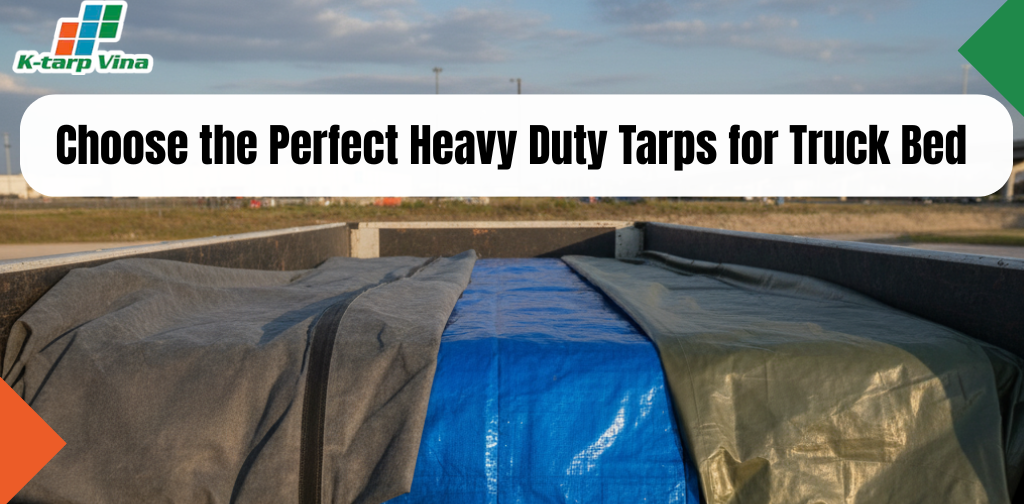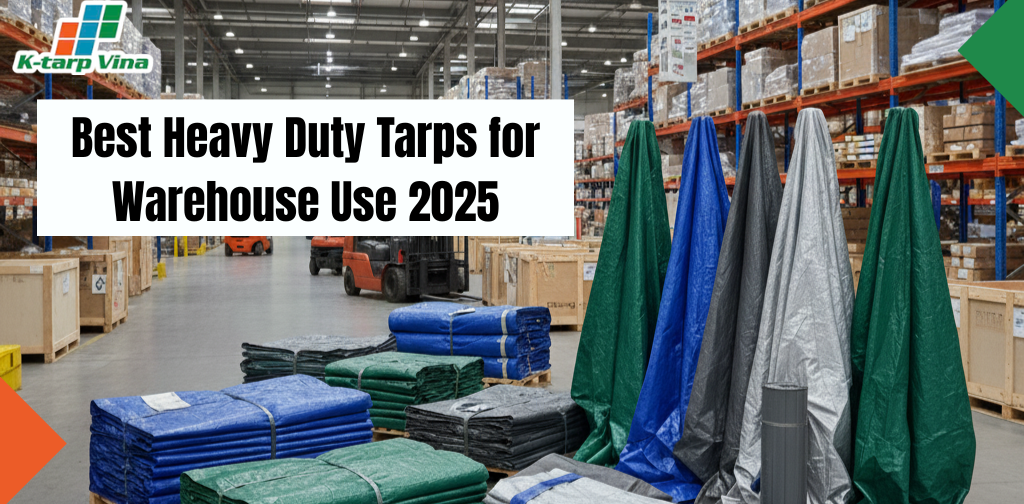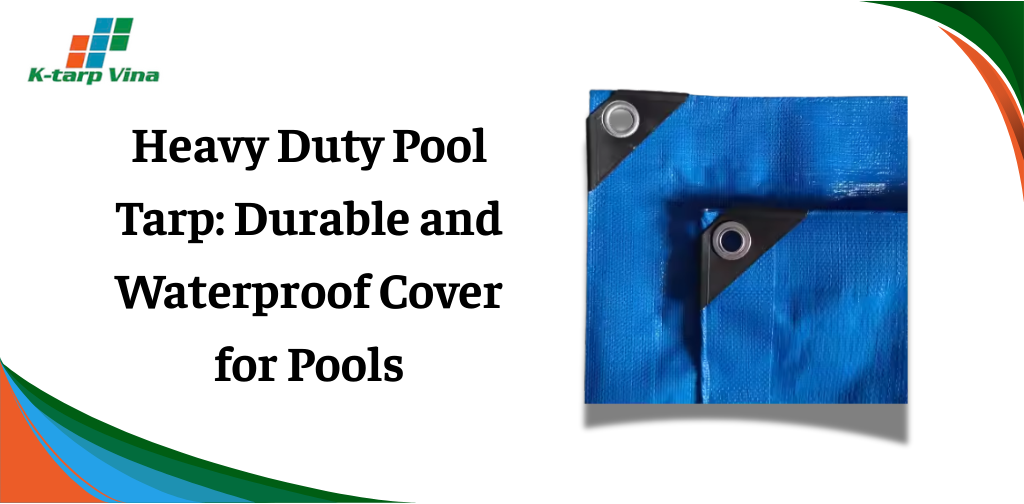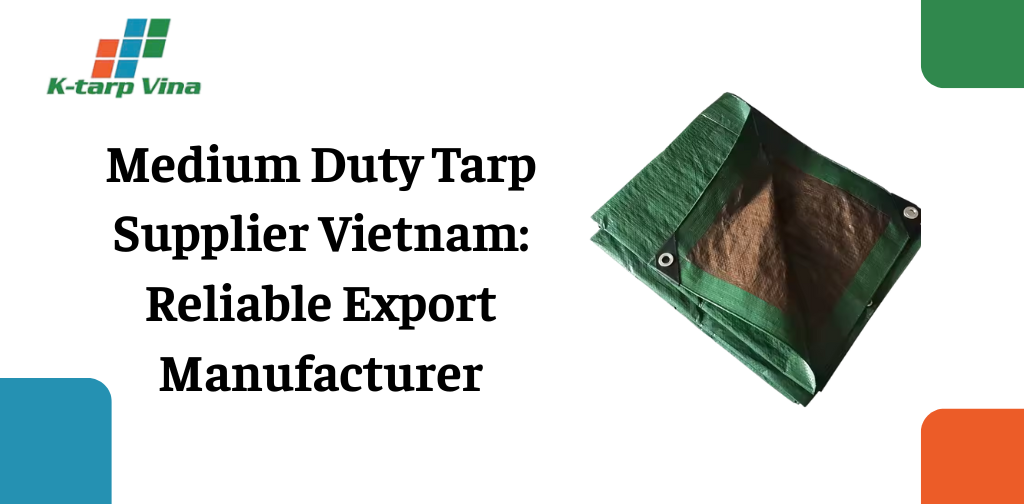A camouflage tarpaulin is an essential tool for various outdoor activities, including camping, hunting, military operations, or garden protection. However, selecting the right camouflage tarpaulin is not always straightforward. One of the most critical factors is the material, particularly the combination of HDPE woven fabric and LDPE coating. This combination offers exceptional durability, waterproofing, and UV resistance, making the camouflage tarpaulin an ideal choice for multiple applications. In this article, Ktarp will share six key criteria to help you choose a high-quality camouflage tarpaulin, with a focus on HDPE woven fabric combined with LDPE coating.
Why is the Material Of A Camouflage Tarpaulin Important?
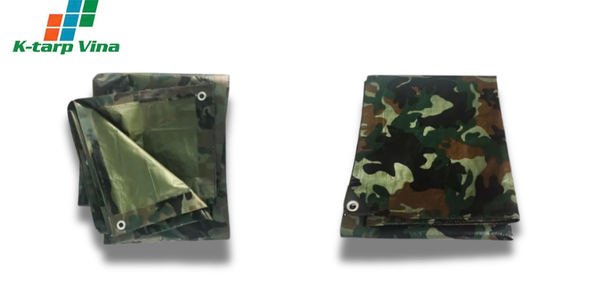
The material of a camouflage tarpaulin plays a pivotal role due to its effective concealment capabilities and high versatility. These tarps are designed with patterns that blend into environments such as forests, deserts, or snow, allowing people and objects to merge seamlessly with their surroundings, reducing the risk of detection.
Camouflage tarpaulins are typically durable, waterproof, tear-resistant, and capable of withstanding harsh conditions, ensuring long-term use in military operations, hunting, or outdoor activities. Additionally, they provide psychological and tactical advantages by making it difficult for adversaries to pinpoint locations, thereby enhancing safety and operational efficiency.
6 Key Criteria For Choosing A Camouflage Tarpaulin
1. Material and Durability
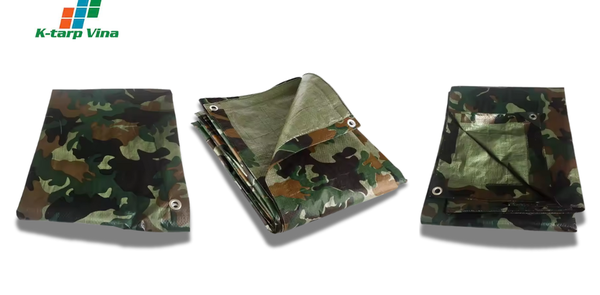
A camouflage tarpaulin made from HDPE woven fabric (High-Density Polyethylene) stands out for its superior tear resistance, offering high mechanical strength ideal for harsh environmental conditions. The tightly woven structure of HDPE ensures the tarp can withstand strong winds, heavy rain, or physical impacts without scratching or tearing.
Additionally, the LDPE coating (Low-Density Polyethylene) applied to the tarp’s surface acts as an extra protective layer, enhancing corrosion resistance and extending the product’s lifespan. This coating not only maintains durability over time but also prevents degradation from factors like humidity, high temperatures, or prolonged outdoor exposure.
Durability: Exceptional tear resistance, withstands strong winds, rain, and abrasion.
Waterproofing: The LDPE coating ensures 100% waterproof performance.
Weight: Lightweight, easy to fold and carry.
Cost-effectiveness: Affordable price relative to its durability and quality.
Disadvantages:
Patterns printed on HDPE may be less sharp compared to polyester or canvas.
Less suitable for applications requiring high aesthetic appeal.
2. Size and Shape
A camouflage tarpaulin is a versatile tool used for camping, hunting, equipment covering, garden protection, or military tasks. Choosing the appropriate size and shape is crucial to ensure the tarp meets specific needs. A correctly sized and shaped tarp optimizes concealment or coverage efficiency while offering convenience during use and transport.
Standard Sizes and Customization Options
- Standard Sizes:
Small: 1m x 2m, 2m x 3m – Suitable for individual tents, small equipment covers, or personal hunting camouflage.
Medium: 3m x 4m, 4m x 5m – Ideal for group camping, vehicle covering, or temporary shelters.
Large: 5m x 6m and above – Perfect for covering large vehicles, shelters, or extensive military camouflage areas.
Customization: Tarps, especially those made from HDPE woven fabric with LDPE coating, can be tailored to specific dimensions or joined via zippers, Velcro, or additional coatings like fire-resistant or infrared-resistant layers.
- Common Shapes
Rectangular: Versatile, used for tents, vehicle covers, easy to fold, most common.
Square: Suitable for small-area shelters or symmetrical objects, less ideal for complex shapes.
Circular/Polygonal: Covers irregular objects, provides 360-degree coverage, less common.
Irregular: Mimics natural shapes, used in military or hunting applications.
3. Camouflage Patterns
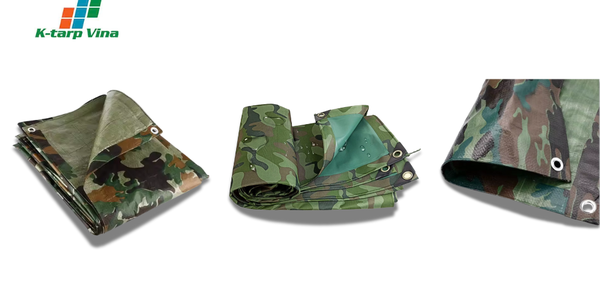
The camouflage pattern is the core element determining a camouflage tarpaulin’s ability to conceal and perform effectively in different environments and scenarios. A well-designed pattern not only blends people, objects, or equipment into their surroundings but also meets specific objectives, such as evading enemies, supporting military tactics, professional hunting, or enhancing aesthetics for outdoor events like camping or festivals. Choosing the right pattern requires understanding the operating environment, the opponent’s observation technology (e.g., night vision or infrared devices), and the intended purpose.
Common Patterns:
-
Woodland (green, brown, black): Mimics dense forests, effective in tropical or temperate forests, less suitable for deserts or snow, ideal for military and hunting.
-
Desert (beige, sand, light brown): Mimics arid regions, perfect for dry environments, less effective in forests or snow, used in Middle Eastern operations.
-
Digital (pixelated, green, brown, gray): Disrupts outlines, effective in multiple environments (forests, urban), counters observation devices, popular in U.S. military.
-
Snow (white, light gray): Reduces contrast, excels in snowy conditions, unsuitable for forests or deserts, used in Nordic regions or winter hunting.
-
MultiCam (green, brown, beige, gray): Versatile across terrains (forests, deserts, hills), less effective in snow, used in multi-environment operations.
-
Urban (gray, black, white): Mimics urban settings, effective in cities, less suitable for natural environments, ideal for SWAT or tactical games.
Pattern Selection Tips:
-
Match the environment (e.g., Woodland for forests, Desert for arid zones).
-
Prioritize Digital/MultiCam for infrared resistance in military use.
-
Consider lighting/seasonal changes.
-
Opt for MultiCam/Digital for versatility.
-
Choose UV-resistant patterns for decorative purposes.
-
Note that MultiCam/Digital patterns are pricier than Woodland/Desert.
4. Load-Bearing Capacity
The load-bearing capacity of a camouflage tarpaulin is a critical factor ensuring its performance in harsh conditions, from challenging battlefield environments to outdoor activities like hunting, camping, or rescue operations. These properties allow the tarp to maintain optimal concealment against enemies, wildlife, or natural elements while ensuring user safety in critical situations.
Durability and load-bearing capacity enable the tarp to resist physical impacts like tearing, abrasion, or deformation while withstanding extreme weather conditions such as heavy rain, strong winds, intense sunlight, or freezing temperatures. Moreover, these attributes extend the tarp’s lifespan, reduce replacement and maintenance costs, and provide versatility for applications ranging from concealing military equipment to setting up emergency shelters.
-
Safety and Concealment: Durable tarps conceal equipment, tactical positions, or counter infrared detection in military use; ensure safe hiding in hunting; maintain patterns to avoid detection.
-
Harsh Conditions: Resist rain, wind, sun, and abrasion; function in snow or freezing temperatures.
-
Longevity and Cost Savings: Prevent tearing and fading, ensuring long-term use; reduce replacement costs; maintain aesthetics and functionality.
-
Versatile Applications: Cover vehicles, tents, shelters, or ground sheets in camping, rescue, or military operations; handle heavy loads.
-
Reliability in Emergencies: Serve as shelters in battlefields, rescue missions, or storms.
5. Waterproofing Capabilities

The UV resistance prevents fading or brittleness under sunlight, extending the tarp’s lifespan. In humid environments, mold resistance inhibits bacterial growth, keeping the tarp clean and aesthetically pleasing. The tarp also exhibits excellent heat resistance, preventing deformation or damage at high temperatures, making it suitable for industrial settings or hot climates. Mechanically, the tarp is tear-resistant, load-bearing, and abrasion-resistant, with materials like HDPE woven fabric, PVC, or coated polyester ensuring long-term durability.
Its flexibility allows for easy folding, transport, and customization in size, color, or shape for uses like shelters, tents, or cargo covers. When choosing a tarp, consider the environment, verify quality standards (e.g., IPX, UV resistance, mold resistance), select a reputable supplier, and balance cost with purpose for optimal value.
Water-resistant: Can withstand light rain or water splashes, suitable for short-term exposure.
Waterproof: With the LDPE coating, the tarp is completely impervious to water, providing optimal protection during heavy rain or submersion.
6. Convenience and Ease of Use
A camouflage tarpaulin excels in convenience and ease of use, making it ideal for outdoor activities. Its lightweight design and foldability make it easy to carry and store, perfect for camping, hunting, or wildlife photography. The natural camouflage patterns blend seamlessly into environments, while grommets and tie-downs enable quick setup without complex tools. This convenience is particularly valuable for frequent relocations, allowing rapid deployment and packing, saving time and effort.
-
Lightweight and Portable: Made from HDPE woven fabric with LDPE coating, it is lightweight, ideal for camping, hunting, or outdoor activities, fitting easily into backpacks or vehicles.
-
Foldable: Folds into a compact size, saving storage space in bags, car trunks, or sheds.
-
Quick Setup: Equipped with reinforced grommets or tie-down points, allowing fast securing with ropes, stakes, or hooks, no specialized tools needed.
-
Easy to Clean: The LDPE coating resists dirt, requiring only water or mild soap for cleaning, minimizing maintenance effort.
-
Effective Waterproofing: Waterproof feature ensures complete protection in heavy rain, safeguarding equipment or sheltered areas.
-
Easy Adjustment: Can be stretched, folded, or repositioned quickly to suit terrain or needs, offering flexibility in emergencies.
In short choosing the right camouflage tarpaulin requires careful consideration of six key criteria: material, waterproofing, durability, patterns, size, and ease of use. A high-quality tarp ensures effective camouflage across various environments while offering durability and user-friendliness. By thoroughly evaluating these factors, you can select a camouflage tarpaulin that best meets your needs, whether for outdoor activities, hunting, military purposes, or decorative applications.

